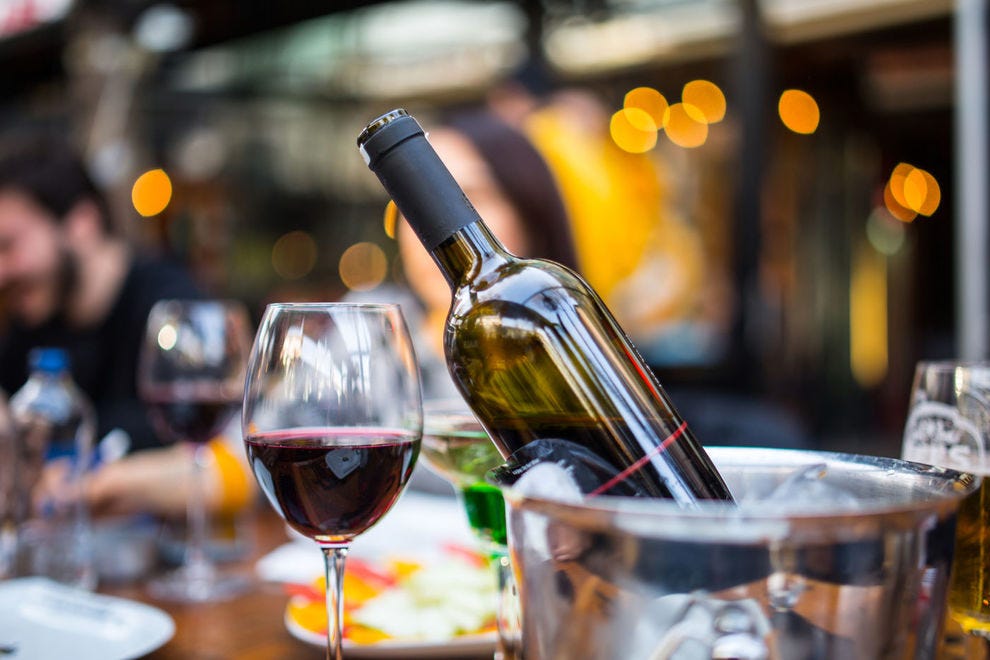Products You May Like
A fine wine deserves special treatment — Photo courtesy of Getty Images / ogeday çelik
My sleek, recently updated kitchen has a wine refrigerator tucked in between two cabinets. It looks a little bit like a cross between a fancy dishwasher and an Apple store. Friends visiting my home for the first time consistently compliment me on it. But the truth is that it’s not even plugged in. I hardly have a collection of vintage bottles counting down the days to a special occasion meriting their corking. The longest that most bottles of wine in this house ever make it is just a few hours sitting on the counter before a dinner party – hardly time to even collect dust, let alone potentially spoil.
But for those of you out there with both a more advanced palette and the disposable income critical to amassing a cellar or fridge full of prestige bottles, it can sometimes be a bit of a head scratcher trying to figure out whether or not an older wine is still any good. Here are a few tips to help you live your best life by only drinking the best quality wine.
Store bottles on their side
 Despite popular belief, having the wine come in contact with the cork is actually good — Photo courtesy of Getty Images / belchonock
Despite popular belief, having the wine come in contact with the cork is actually good — Photo courtesy of Getty Images / belchonock
You can prevent a good number of age-related ails with a bit of foresight and proper planning. Although grocery stores and other retails spots often present their bottles vertically, with the label visible to potential customers, that’s not the position your wine should be stored in once you’ve taken it home. Instead, bottles should be laid out horizontally.
A bit of fairly common, but completely wrong, wine “knowledge” that many amateur collectors – or at least appreciators and drinkers – believe is that the specific type of spoiling called corking happens from prolonged contact between the liquid within and the cork itself. In fact, you want your cork in contact with the wine. Exposure to the liquid prevents the cork from drying out and inadvertently exposing the contents within to the outside air. If you want your wine to remain in its prime, keep those bottles on their sides.
Cork is king
The first thing to inspect when checking the freshness of an older bottle of wine is the cork. Although some winemakers seal their bottles with a wax stamp, the vast majority simply cap their wines with a cork and possibly a thin, metallic or papery shell. The aerial view of your cork should appear swollen and full, completely expanded into the neck of the bottle. From the front, corks should appear uniform in shape and somewhere approaching two inches in length. Anything shorter than an inch and a half suggests a broken seal, perhaps related to a cork that has dried out. The top of your cork should be supple and firm to the touch. A cork that turns to sand upon contact has likewise been compromised.
Ullage, ullage, ullage
The thin band of space between the cork and the wine in a bottle that is standing vertically can tell you plenty about what’s going on inside a bottle. This space, called ullage, should look like a narrow gap, limited entirely to the mid-to-high neck of the bottle. If you see ullage dipping into the base of the neck or the shoulder, that’s really bad news. Your cork, or potentially the glass itself, has somehow been compromised. Recent leakage is the very best you can hope for here, but a more likely explanation is that evaporation or oxidation has occurred. I hate to break it to you, but your wine is toast.
Check the thermostat
Anybody remember when Coors Light rolled out those highly publicized “two-stage cold activation” cans almost a decade ago? The cans featured a color-changing strip that let thirsty potential drinkers know if the contents therein were simply cold or super cold. Man oh man, if only some enterprising soul could develop something comparable for wine.
The biggest hurdle to such a technology is the fact that while beer that’s been subjected to high temperatures after bottling may potentially spoil or skunk, wine almost certainly will. While you can’t account for the storage temperature of a bottle before you’ve gotten your paws on it, you can likely control things from there on out. So if your wine fridge putters out on you during, say, an Arizona summer, without you realizing it for a few weeks, your wine has likely turned on you. Simply knowing the temperature of your bottle when you’re ready to pop it open can tell you quite a bit about what to expect.
Grab your reading glasses
Doing a few minutes of homework prior to uncorking a vintage bottle can really help set expectations. Wine lovers are a vocal community, and the internet and various app stores are full of habitual reviewers and amateur critics. Reading feedback from a couple of people who also recently enjoyed that ‘94 Chianti can both get your mouth watering in advance and alert you to your bottle having turned if your experience doesn’t track with what you’ve read.
Not every spoiled bottle of wine is an acrid, musty, sulfury disaster. Sometimes a bottle can just taste a bit…off. By understanding the experiences of other wine lovers, as opposed to the marketing jargon on the rear label, you can learn a lot about what your bottle should taste like, compared to what it actually does.

